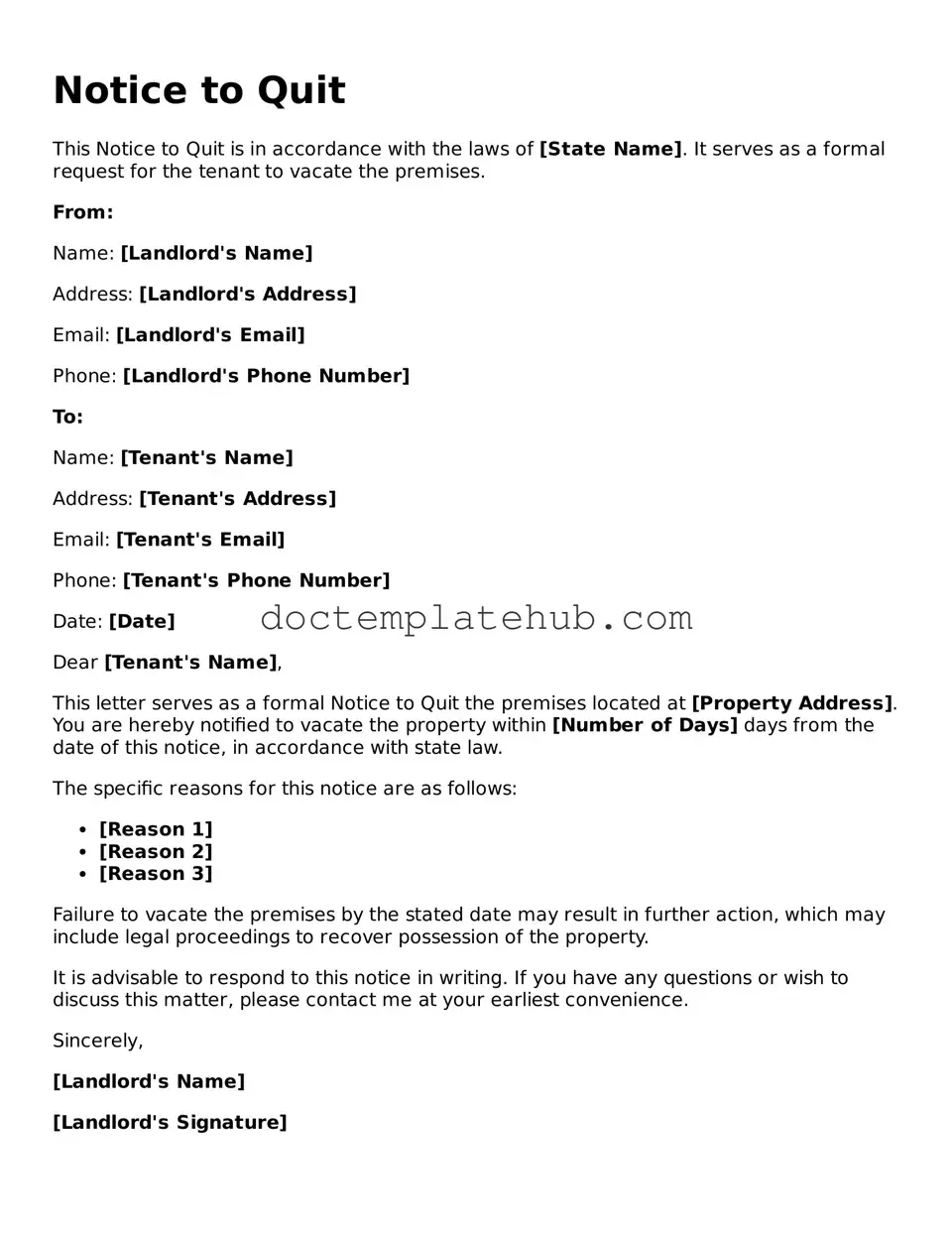What is a Notice to Quit form?
A Notice to Quit form is a legal document used by landlords to inform tenants that they must vacate the rental property. It typically outlines the reasons for the eviction and provides a timeline for the tenant to leave. This form is often the first step in the eviction process.
When should a landlord use a Notice to Quit?
A landlord should use a Notice to Quit when a tenant has violated the terms of their lease, such as not paying rent or causing damage to the property. It can also be used when the landlord wants to terminate a month-to-month lease for any lawful reason.
How much notice is required in a Notice to Quit?
The required notice period varies by state and the reason for eviction. Generally, it can range from a few days to several weeks. It is important to check local laws to determine the specific requirements in your area.
Can a tenant contest a Notice to Quit?
Yes, a tenant can contest a Notice to Quit. If they believe the notice is unjust or that they have not violated the lease, they may choose to respond or take legal action. Seeking legal advice can help tenants understand their options.
What happens if a tenant does not leave after receiving a Notice to Quit?
If a tenant does not vacate the property by the deadline specified in the Notice to Quit, the landlord may initiate formal eviction proceedings. This typically involves filing a lawsuit in court to obtain an eviction order.
Is a Notice to Quit the same as an eviction notice?
No, a Notice to Quit is not the same as an eviction notice. The Notice to Quit is the initial step, notifying the tenant to leave. An eviction notice usually follows if the tenant fails to comply with the Notice to Quit.
Can a landlord give a Notice to Quit for any reason?
A landlord cannot give a Notice to Quit for any reason. The reasons must be lawful and typically include lease violations or the end of a rental agreement. Discrimination or retaliation against a tenant is not permissible.
Do I need to file a Notice to Quit with the court?
Generally, a Notice to Quit does not need to be filed with the court. It is a notice that the landlord provides directly to the tenant. However, if the eviction process moves forward, the landlord will need to file appropriate legal documents with the court.
What should be included in a Notice to Quit?
A Notice to Quit should include the tenant's name, the property address, the reason for the notice, and the date by which the tenant must vacate. It may also include any relevant lease provisions and information about how to respond.
Can a tenant request more time after receiving a Notice to Quit?
A tenant can request more time to vacate the property after receiving a Notice to Quit. However, it is up to the landlord to decide whether to grant this request. Communication between both parties can be helpful in these situations.
